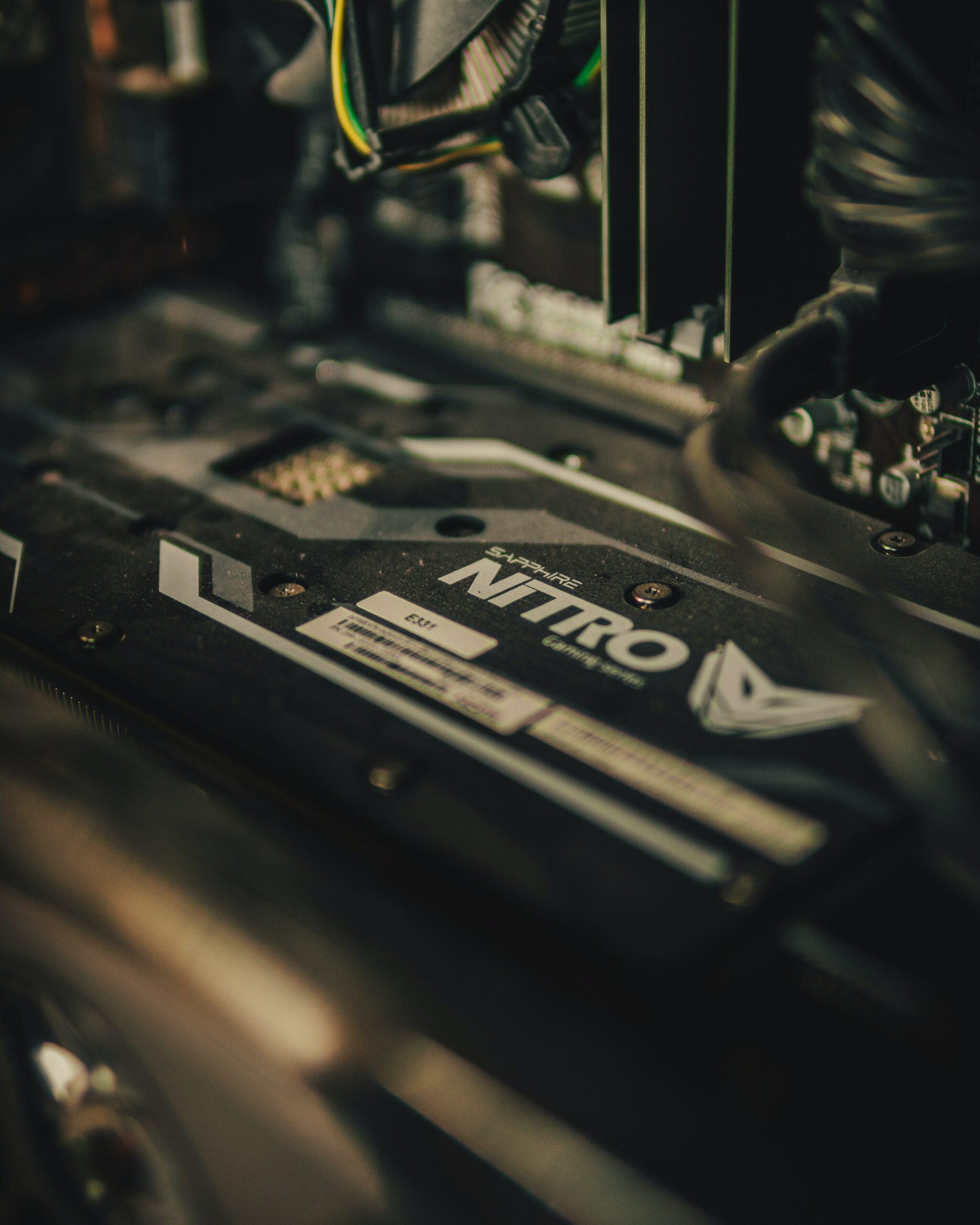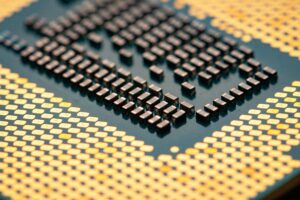Intel Turbo Boost Technology is a feature found in Intel processors that aims to enhance the performance of the CPU by dynamically adjusting its clock speed. The purpose of this article is to delve into the topic of whether Turbo Boost should be enabled or disabled. We will explore the functionality of Intel Turbo Boost Technology, its benefits, and the considerations that need to be considered when deciding whether to enable or disable it. By the end of this article, readers will have a comprehensive understanding of Intel Turbo Boost and be able to make an informed decision based on their specific needs and circumstances.
Intel turbo boost on or off
Understanding Intel Turbo Boost Technology:
Intel Turbo Boost Technology is a feature integrated into Intel processors that dynamically adjusts the CPU’s clock speed to optimize performance based on workload demands. Here’s a breakdown of how Turbo Boost works and the benefits it provides:
- Explanation of how Turbo Boost works:
– Intel Turbo Boost monitors the CPU’s power, temperature, and current workload.
– When the processor detects that the workload is within its power and thermal limits, it can temporarily increase the clock speed of one or more cores.
– By increasing the clock speed, Turbo Boost enables the CPU to complete tasks faster, improving performance.
- Automatic speed adjustment based on workload demands:
– Turbo Boost operates automatically without requiring any user intervention or configuration.
– The technology constantly monitors the CPU’s power and temperature to determine if there is headroom to increase clock speeds.
– When the workload is demanding, and thermal and power headroom is available, Turbo Boost can dynamically boost the clock speed to provide a performance uplift.
- Increased performance through higher clock speeds:
– By allowing the CPU to run at higher clock speeds, Turbo Boost enhances the performance of single-threaded tasks that rely on a single core.
– This technology can increase the clock speed of specific cores that are handling the workload, enabling them to complete tasks more quickly.
– The result is improved responsiveness, faster program execution, and enhanced overall system performance.
Intel Turbo Boost Technology plays a crucial role in maximizing the performance potential of Intel processors. Automatically adjusting the clock speed based on workload demands increases performance during tasks that can benefit from higher frequencies. In the next sections, we will explore the considerations when deciding whether to enable or disable Turbo Boost and its benefits in specific scenarios.
Benefits of Enabling Turbo Boost:
Enabling Intel Turbo Boost Technology can bring several advantages to your computing experience. Here are the key benefits of enabling Turbo Boost:
- Improved performance during demanding tasks:
– Turbo Boost allows the CPU to operate at higher clock speeds when the workload requires it, resulting in improved performance.
– This is particularly beneficial for resource-intensive tasks such as video editing, 3D rendering, data analysis, and software compilation.
– By boosting the clock speed, Turbo Boost helps to accelerate the execution of these demanding tasks, reducing processing time and enhancing productivity.
- Dynamic adjustment of CPU frequency for optimized performance:
– Turbo Boost dynamically adjusts the CPU frequency based on workload demands.
– It ensures that the processor operates within the power and thermal limits at the highest possible clock speed, optimizing performance for each specific task.
– This dynamic adjustment helps to achieve the best balance between performance and energy efficiency, maximizing the potential of the CPU.
- Enhanced user experience for tasks like gaming and content creation:
– Gaming and content creation often require substantial processing power.
– Enabling Turbo Boost can significantly enhance the user experience by allowing the CPU to deliver higher clock speeds during these resource-intensive activities.
– It leads to smoother gameplay, reduced rendering times, and improved responsiveness, enabling a more immersive gaming experience and faster content creation workflows.
- Overall system responsiveness:
– Turbo Boost’s ability to increase clock speeds on demand also improves the responsiveness of your system in everyday tasks.
– When you launch applications, load files, or perform general computing activities, Turbo Boost can provide an extra performance boost to ensure swift execution and seamless multitasking.
By enabling Intel Turbo Boost Technology, you unlock the full potential of your Intel processor, especially during demanding tasks. It dynamically adjusts the CPU frequency to optimize performance, improving productivity, enhancing user experiences in gaming and content creation and overall system responsiveness. However, it is important to consider certain factors, such as temperature and power management, which will be discussed in the subsequent sections.
Considerations for Leaving Turbo Boost Enabled:
While enabling Intel Turbo Boost Technology offers performance benefits, it’s essential to consider the potential implications and take appropriate measures to manage them. Here are some important considerations when leaving Turbo Boost enabled:
- Potential increase in CPU temperatures:
– Turbo Boost increases the CPU’s clock speed, which can result in higher power consumption and increased heat generation.
– The higher clock speeds can cause the CPU to operate at elevated temperatures, especially during intensive workloads.
– This can lead to higher fan speeds and increased noise levels, potentially impacting the overall system’s thermal performance.
- The impact of high temperatures on system stability:
– Continuous operation at high temperatures may affect the stability and reliability of your system.
– Overheating can lead to thermal throttling, where the CPU reduces its clock speed to prevent overheating.
– Thermal throttling can result in decreased performance, stuttering, and system slowdowns, adversely impacting the user experience.
- Importance of monitoring and managing thermal performance:
– To ensure the optimal functioning of your system, it is crucial to monitor and manage the thermal performance when Turbo Boost is enabled.
– Monitoring tools, such as temperature monitoring software or BIOS utilities, can provide real-time temperature readings of the CPU.
– Adequate cooling solutions, such as efficient CPU coolers, proper case ventilation, and thermal paste application, should be employed to dissipate heat effectively.
- Adjusting Turbo Boost settings:
– Some motherboard BIOSes offer options to adjust Turbo Boost settings, such as modifying power limits or setting a maximum clock speed.
– Customizing these settings can help balance performance and temperature based on your specific requirements and system capabilities.
– Consulting your motherboard vendor or referring to the motherboard manual can guide available options and recommended settings.
By considering the potential increase in CPU temperatures, understanding the impact on system stability, and actively monitoring and managing thermal performance, you can mitigate the risks of leaving Turbo Boost enabled. This ensures a balance between performance and temperature management, maintaining the longevity and stability of your system. In cases where thermal concerns persist, exploring the option of disabling Turbo Boost may be necessary, as discussed in the next section.
Disabling Turbo Boost: When and Why?
While Turbo Boost can enhance performance, there are situations where disabling it may be necessary. Here are some scenarios in which you might consider disabling Turbo Boost:
- Addressing thermal concerns and overheating issues:
– If your system consistently experiences high CPU temperatures, especially during heavy workloads or extended gaming sessions, disabling Turbo Boost can help mitigate thermal issues.
– Keeping the CPU operating at lower clock speeds can reduce heat generation and potentially lower overall temperatures.
– This can be particularly relevant if you have inadequate cooling solutions or your system runs in a hot environment.
- Mitigating the risk of thermal throttling:
– Thermal throttling occurs when the CPU reaches high temperatures and reduces its clock speed to prevent overheating.
– Disabling Turbo Boost can help minimize the frequency of thermal throttling episodes by limiting the CPU’s clock speed to a level where it generates less heat.
– This ensures more consistent performance and avoids sudden drops in CPU frequency during demanding tasks.
- Balancing performance and temperature trade-offs:
– Disabling Turbo Boost may lead to a slight decrease in performance, especially during single-threaded tasks that benefit from higher clock speeds.
– However, if you prioritize temperature management and system stability over maximum performance, disabling Turbo Boost can help maintain lower temperatures and improve overall system reliability.
– It’s important to assess the trade-off between performance gains and the impact on temperature and choose the option that aligns with your specific needs and system constraints.
- Specific requirements or software limitations:
– In certain cases, specific applications or software might not function optimally with Turbo Boost enabled.
– Some professional applications, such as audio/video production or scientific simulations, may require precise and consistent CPU performance without clock speed fluctuations.
– Disabling Turbo Boost can provide a more controlled and predictable performance environment for such applications.
When deciding to disable Turbo Boost, weighing the potential performance trade-offs against the need for temperature management and system stability is crucial. Each system is unique, and the decision should be based on factors such as cooling capabilities, environmental conditions, workload requirements, and personal preferences.
By disabling Turbo Boost, you can address thermal concerns, mitigate the risk of thermal throttling, and balance performance and temperature trade-offs. It allows for a more controlled and consistent performance environment, especially when temperature management takes precedence.
Effects of Disabling Turbo Boost:
Disabling Intel Turbo Boost Technology can have certain effects on system performance. Here are the key considerations regarding the impact of disabling Turbo Boost:
- Slightly reduced performance during heavy workloads:
– Turbo Boost is designed to increase the CPU’s clock speed during demanding tasks, which can significantly improve performance.
– By disabling Turbo Boost, the CPU will consistently operate at its base clock speed, resulting in slightly reduced performance during intensive workloads.
– This reduction in performance may be more noticeable in tasks that heavily rely on single-threaded performance or those that benefit from higher clock speeds.
- Potential impact on tasks requiring high clock speeds:
– Certain applications like gaming, video editing, 3D rendering, or software compilation may require high clock speeds to deliver optimal performance.
– Disabling Turbo Boost can limit the CPU’s ability to reach those higher clock speeds, potentially impacting the execution time of these tasks.
– It is important to assess the specific requirements of your applications and determine whether the potential impact on performance is acceptable.
- Assessing the trade-off between temperature and performance:
– Disabling Turbo Boost can help manage temperature concerns by reducing heat generation, as discussed earlier.
– However, carefully evaluating the trade-off between temperature management and performance is essential.
– Lower temperatures can enhance system stability; sacrificing performance may not be desirable, particularly for tasks requiring faster processing or real-time responsiveness.
It is crucial to consider your system’s specific needs and requirements when deciding whether to disable Turbo Boost. The impact of disabling Turbo Boost varies depending on factors such as workload intensity, application requirements, cooling solutions, and personal preferences.
To make an informed decision, assess the trade-off between temperature management and performance based on your specific usage patterns. Monitor system temperatures and performance under different conditions, and evaluate whether the reduction in performance outweighs the benefits gained from improved temperature management.
Ultimately, the decision to disable Turbo Boost should be based on finding the right balance for your system, considering the trade-off between temperature, performance, and the specific demands of your workload.
Personalizing Turbo Boost Settings:
To personalize Turbo Boost settings and optimize the balance between performance and temperature management, consider the following steps:
- Checking the BIOS for Turbo Boost control options:
– Access your system’s BIOS settings by restarting your computer and pressing the designated key during startup (usually displayed on the screen).
– Look for options related to Turbo Boost, CPU power management, or overclocking in the BIOS menu.
– Some motherboard BIOSes can customize Turbo Boost settings, such as adjusting power limits or setting a maximum clock speed.
– Explore these options to find settings that align with your desired performance and temperature goals.
- Consultation with motherboard vendors for specific configurations:
– Contact your motherboard vendor for guidance if you need clarification on the available Turbo Boost control options or how to configure them.
– Visit the vendor’s website or contact customer support for specific information about your motherboard model.
– They can provide recommendations and guidelines for adjusting Turbo Boost settings to achieve optimal performance and temperature management based on their product specifications.
- Adjusting Turbo Boost settings to meet individual needs:
– Experiment with different Turbo Boost configurations based on the available options in your BIOS and any recommendations from the motherboard vendor.
– Increase or decrease power limits, adjust maximum clock speeds, or modify other relevant settings based on your specific requirements and system capabilities.
– Strike a balance between performance and temperature management that aligns with your preferences and workload demands.
– Monitor system temperatures and performance during various tasks to ensure stability and identify any necessary adjustments.
Personalizing Turbo Boost settings allow you to tailor the CPU’s behavior to meet your specific needs, optimizing performance and temperature management according to your preferences. However, it’s essential to exercise caution when making changes in the BIOS and closely monitor system behavior to ensure stability and prevent any adverse effects.
Remember to refer to your motherboard’s documentation, consult with the vendor if necessary, and proceed cautiously when modifying BIOS settings to avoid unintended consequences.
The Decision: To Enable or Disable? :
The decision to enable or disable Turbo Boost ultimately depends on various factors specific to your system requirements, usage patterns, and personal preferences. Here are the key considerations to help you make an informed decision:
- Considering system requirements and usage patterns:
– Evaluate the specific tasks and applications you frequently use on your system.
– Determine whether those tasks benefit significantly from Turbo Boost’s increased clock speeds or if they can be adequately performed without it.
– Consider whether your system’s overall performance meets your expectations for the intended usage.
- Evaluating the trade-offs between performance and temperature:
– Assess the importance of performance versus temperature management in your particular scenario.
– Determine whether the potential decrease in performance when Turbo Boost is disabled is acceptable, given the desired temperature levels and system stability.
– Consider the potential impact on tasks that require higher clock speeds and whether the decrease in performance outweighs the benefits gained from temperature management.
- Factors to consider: CPU cooling, workload intensity, and user preferences:
– Evaluate the effectiveness of your CPU cooling solution. You can enable Turbo Boost without significant temperature concerns if you have adequate cooling.
– Consider the intensity of your workload. If you regularly engage in resource-intensive tasks, Turbo Boost can provide noticeable performance gains but may also lead to increased temperatures.
– Some users prioritize temperature management and system stability, while others prioritize maximum performance.
By carefully considering these factors, you can decide whether to enable or disable Turbo Boost on your system. Remember that this decision is not necessarily permanent, and you can experiment with different settings, monitor system behavior, and adjust accordingly based on your evolving needs.
Regularly monitoring system temperatures and performance can help you assess the effectiveness of your chosen configuration and make any necessary adjustments to strike the right balance between performance and temperature management.
Conclusion:
In conclusion, Intel Turbo Boost Technology is a feature that dynamically adjusts the CPU’s clock speed to provide increased performance when needed. By automatically boosting clock speeds, Turbo Boost can enhance the performance of your system, particularly during demanding tasks like gaming and content creation.
However, balancing performance, temperature management, and individual needs is crucial. Enabling Turbo Boost can improve performance during heavy workloads, optimize CPU frequency based on workload demands, and enhance the overall user experience.
On the other hand, there may be situations where disabling Turbo Boost becomes necessary. Addressing thermal concerns, mitigating the risk of thermal throttling, and finding the right trade-off between performance and temperature are essential considerations.
Personalizing Turbo Boost settings through BIOS configurations, consulting motherboard vendors for guidance, and monitoring system behavior can help optimize the balance between performance and temperature management.
Ultimately, the decision to enable or disable Turbo Boost should be based on an assessment of system requirements, workload intensity, CPU cooling capabilities, and personal preferences. Making an informed decision will ensure that your system operates optimally, considering both performance and temperature considerations.
It’s important to remember that each system is unique, and what works best for one may not be the ideal choice for another. By evaluating your specific circumstances and needs, you can determine whether to enable or disable Turbo Boost to achieve the desired balance between performance and temperature management.
So, take the time to assess your system, consider the trade-offs, and make an informed decision that aligns with your individual circumstances.












